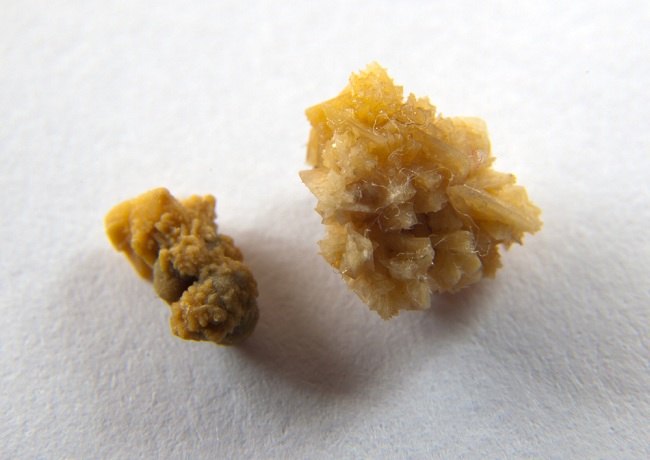Asbestosis is a lung disease caused by long-term exposure to asbestos fibers. Symptoms of asbestosis usually appear years after a person is exposed to asbestos fibers.
Asbestos is a type of mineral that is generally used for building roofs. If it is still in good condition, asbestos is not harmful to health. But when it is damaged, asbestos can emit fine dust that contains asbestos fibers.

Dust containing asbestos fibers is susceptible to inhalation by humans. If inhaled, asbestos fibers can cause gradual damage to the lungs and cause a number of symptoms, one of which is shortness of breath.
Causes of Asbestosis
Asbestosis disease occurs when a person accidentally inhales dust containing asbestos fibers continuously. The asbestos fibers are then trapped in the air pockets in the lungs (alveoli) and form scar tissue, so that the lungs become stiff.
Stiff lungs cause these organs can not inflate and deflate normally. As a result, the patient becomes difficult to breathe. The condition can develop more severe if the patient has a smoking habit.
Asbestosis risk factors
Asbestosis is more at risk of attacking someone who works as:
- asbestos miner
- Ship workers
- Workers on railroads
- Asbestos factory workers
- Builder
- Electric technician
- mechanic
Asbestosis Symptoms
In most cases, asbestosis symptoms appear 10-40 years after a person is exposed to asbestos. Here are some of the symptoms of asbestosis:
- Hard to breathe
- Persistent dry cough
- wheezing or wheezing
- Decreased appetite
- Weight loss
- Body feels very tired
- Chest or shoulder pain
- Clubbing (widening and swelling of the fingers and fingernails) or clubbing finger
When to go to the doctor
Get a screening or chest X-ray every 3-5 years if you live or work in an environment where there is a risk of exposure to asbestos dust. In addition, if the symptoms mentioned above appear, immediately consult a doctor.
If you have been diagnosed with asbestosis, check with your doctor regularly so that the progress of your condition can be known. Routine examination is important to prevent complications of asbestosis.
Asbestosis Diagnosis
The doctor will ask the patient's symptoms, medical history, and whether the patient's occupation makes him susceptible to exposure to asbestos dust. After that, the doctor will perform a physical examination, including a physical examination of the chest.
Next, the doctor will perform additional examinations, such as:
- Scanning with chest X-ray and CT scan, to see an image of the lungs
- Pulmonary function tests, to determine respiratory function, including to measure the amount and speed of air inhaled and exhaled by the patient
- Tissue sampling (biopsy) or fluid in the lungs, to detect abnormalities in the lungs
Asbestosis Treatment
Asbestosis treatment aims to relieve symptoms, slow the progression of the disease and prevent complications. Some of the treatment methods are:
- Giving oxygen to overcome the lack of oxygen due to respiratory disorders
- Pulmonary rehabilitation therapy to help the lungs work more effectively. One of them is by teaching patients breathing techniques
- Lung transplant or graft to treat a severe decline in lung function. Lung transplantation is performed by replacing damaged lungs with healthy lungs from a donor
During the treatment period, the patient is asked to have regular check-ups with the doctor. The doctor will perform regular lung function scans and tests to determine the progress of the patient's condition. The time interval between examinations will be adjusted according to the severity of the asbestosis.
To assist the treatment process, patients will be advised to do the following:
- Avoid exposure to asbestos dust so asbestosis does not get worse.
- Quit smoking and stay away from secondhand smoke to prevent damage to the respiratory tract and lungs.
- Get vaccinated against flu and pneumonia to reduce the risk of developing lung infections.
Please note, lung damage due to exposure to asbestos fibers cannot be cured. However, the above treatment methods can prevent the patient's condition from getting worse.
Asbestosis Complications
Asbestosis can cause serious complications, especially if the patient is exposed to asbestos dust continuously. These complications include:
- Lung cancer, especially in asbestosis sufferers who smoke
- Mesothelioma (cancer of the lining of the lungs, heart, stomach, or testicles)
- Thickening of the pleura, which is the layer that covers the lungs
- Effusion or accumulation of fluid in the pleura
- Laryngeal cancer
Asbestosis Prevention
The best way to prevent asbestosis is to avoid asbestos exposure, especially if you work in a field that is prone to asbestos exposure. How to prevent it is to wear a face shield and special clothing when working.
If the roof of your house uses asbestos and is damaged, immediately replace it with another material that is safer. Asbestos that has been damaged can release asbestos fibers that are easily inhaled.
If you have been diagnosed with asbestosis, check with your doctor regularly to prevent complications. If you smoke, stop the habit so that the risk of developing lung cancer decreases.









